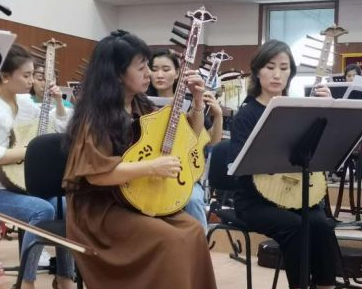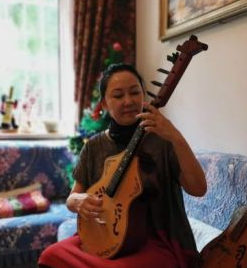The improved version of "Huobusi" takes Mongolian plucked instruments to the world
"We have improved the traditional 'Huobusi', and have improved 9 playing defects such as intonation, timbre, and playing comfort. We have also innovated and optimized the appearance and surrounding supporting facilities. At present, the research and development has been completed. Basic samples were also tested successfully."
Asida, a famous music producer in Inner Mongolia, described the original intention of improving this instrument: "I have been engaged in Mongolian music production for more than 20 years. When I saw that our Mongolian plucked instruments could not be compared with Mongolia due to various problems It is a pity when the ethnic music is on the international stage together, as a Mongolian musician, I feel that I have the ability and responsibility to improve it.”

According to the information of the Intangible Cultural Heritage Protection Center of Inner Mongolia, Huobusi, also known as Hupasi, Hobis, etc., is a Mongolian plucked musical instrument, which is mainly popular in Inner Mongolia, Hebei and Gansu. The name of Huobusi and its shape were first seen in the historical records of the Yuan Dynasty. In the Yuan Dynasty, Huobousi was often used for grand banquets in the palace or grand gatherings in the royal chamber.
"With the change of history, this ancient Mongolian musical instrument was gradually lost after the Qing Dynasty. In the 1970s, with the efforts of musicians La Surong, Gao Qingletu and others, a new type of Huobusi was restored. , this ancient national musical instrument was reborn." Asida introduced.
The reporter learned that since the birth of the new type of Huobousi, it has been firmly in the "spot" of the Mongolian first plucked musical instrument in the folk orchestra of the Inner Mongolia National Art Theater until today.
In an interview, Yeerda, the current head of the folk orchestra of the Inner Mongolia National Art Theater, said that Huobousi plays the main plucked part in the folk ensemble, and is an important plucked instrument that embodies the nomadic culture of the north.
Talking about the inheritance and development of Huobousi, Yelda said frankly: "The currently used Huobousi, because of the metal strings and frets, will produce noise after friction, and the pitch and timbre of the performance also need to be improved. These defects make this Mongolian traditional musical instrument 'individual' not prominent. If the improved 'Hobus' can solve this problem, I believe it can go out of Inner Mongolia, go to China, and even go to the world."

According to the information of the Intangible Cultural Heritage Protection Center of Inner Mongolia, Huobusi, also known as Hupasi, Hobis, etc., is a Mongolian plucked musical instrument, which is mainly popular in Inner Mongolia, Hebei and Gansu. The name of Huobusi and its shape were first seen in the historical records of the Yuan Dynasty. In the Yuan Dynasty, Huobousi was often used for grand banquets in the palace or grand gatherings in the royal chamber.
"With the change of history, this ancient Mongolian musical instrument was gradually lost after the Qing Dynasty. In the 1970s, with the efforts of musicians La Surong, Gao Qingletu and others, a new type of Huobusi was restored. , this ancient national musical instrument was reborn." Asida introduced.
The reporter learned that since the birth of the new type of Huobousi, it has been firmly in the "spot" of the Mongolian first plucked musical instrument in the folk orchestra of the Inner Mongolia National Art Theater until today.
In an interview with reporters, Yeerda, the current head of the folk orchestra of the Inner Mongolia National Art Theater, said that Huobousi plays the main plucked part in the folk ensemble, and is an important plucked instrument that embodies the nomadic culture of the north.
Talking about the inheritance and development of Huobousi, Yelda said frankly: "The currently used Huobousi, because of the metal strings and frets, will produce noise after friction, and the pitch and timbre of the performance also need to be improved. These defects make this Mongolian traditional musical instrument 'individual' not prominent. If the improved 'Hobus' can solve this problem, I believe it can go out of Inner Mongolia, go to China, and even go to the world."
 渝公网安备 50010702504639号
渝公网安备 50010702504639号